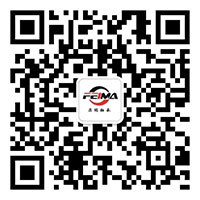Inspection after bearing installation
Release time:
2023-09-04
Whether the bearing is installed correctly or not has a direct impact on its life and the accuracy of the host. If the installation is improper, the bearing not only has vibration, high noise, low accuracy, large temperature rise, but also has the danger of being stuck and burned; on the contrary, good installation can not only ensure the accuracy, but also greatly extend the life. Therefore, after the bearing is installed, it must be inspected.
The key inspection items are as follows: after the installation of the bearing at the installation position, first check whether the running parts collide with the fixed parts, whether the lubricating oil can flow into the bearing smoothly, and whether the sealing device and the axial fastening device are installed correctly.
Check the radial clearance; except for the installation of bearings with pre-interference, the radial clearance should be checked. Deep groove ball bearings can be hand rotation test, with smooth and flexible, no vibration, no swing around as well. Cylindrical roller and spherical roller bearings can be tested with a feeler gauge. The feeler gauge is inserted between the roller and the bearing ring. The feeler gauge insertion depth should be greater than 1/2 of the roller length. When the radial clearance of the bearing cannot be measured with a feeler gauge, the amount of movement of the bearing in the axial direction can be measured instead of the reduction of the radial clearance. Normally, if the bearing inner ring is a conical hole, the axial movement on the conical surface is about 15 times the radial clearance reduction.
The radial clearance of the bearing can be adjusted after some unqualified installation, such as angular contact ball bearings and tapered roller bearings. Some have been adjusted according to the standard at the time of manufacture, and cannot be adjusted after installation. Such as stamping outer ring needle roller bearings, deep groove ball bearings, self-aligning ball bearings, cylindrical roller bearings, self-aligning roller bearings, etc. If this kind of bearing is unqualified after installation and the radial assembly clearance is too small, it indicates that the matching of the bearing is not properly selected or the assembly part is not processed correctly. At this time, the bearing must be removed, find out the reason, and reinstall it after elimination. Of course, the bearing clearance is too large.
Latest information



